Suppose the CPU wnat to read the 4 bytes at address 408:

The cache memory will check whether it has the correct value first before reading the RAM !!
The block # 102 is not found in any cache slot:

We must lookup the block # (102) in all slots of the associative cache...
A sequential search to lookup a value in a set of N values runs in O(N) time:
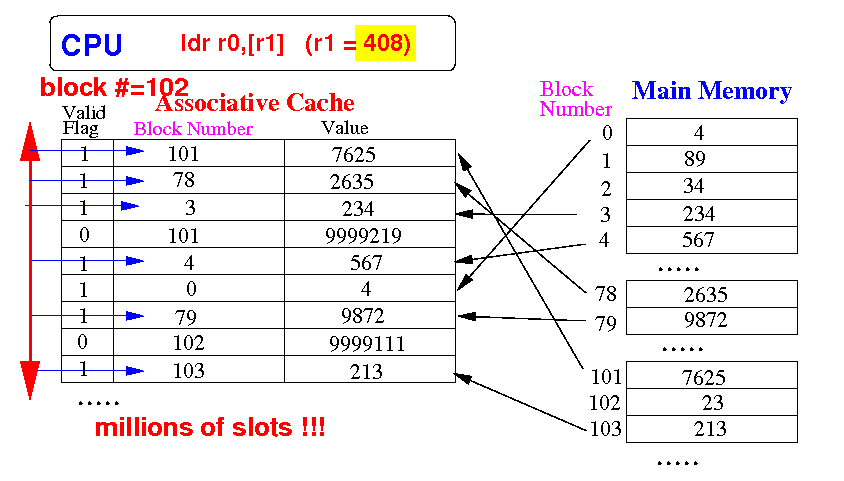
The sequential search running time is longer than it takes to read the value from memory !!!
The block # lookup will use a parallel search method !!!
Bridging the discrepancy: the CPU uses memory addresses

But the associative cache stores block numbers to identify memory locations
Bridging the discrepancy: how to convert a memory address into a block number
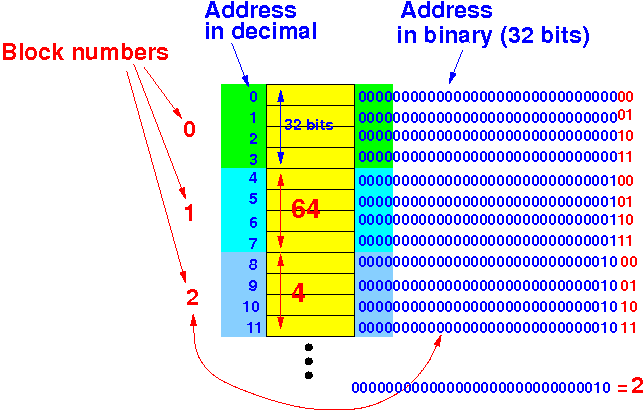
Method: block # = remove last 2 bits from memory address !!
Graphically explained: how to convert a memory address into a block number
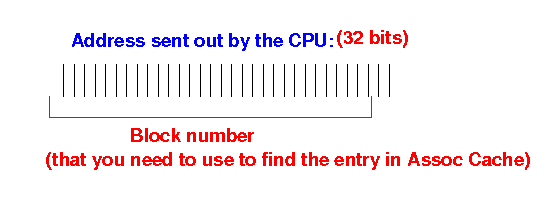
Method: block # = remove last 2 bits from memory address !!
This is the structure of an associate cache memory circuit:
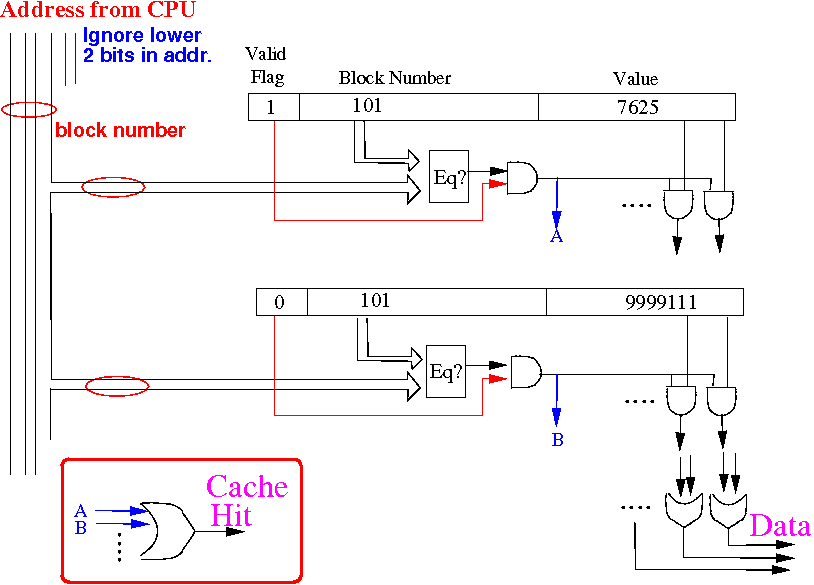
I will explain the circuit in a piecemeal fashion next...
The input signals and output signals of the associative cache:

The associative cache must return the data in the requested memory address to the CPU
We compare the requested block number with the block number stored in slot 1:

But wait: the slot must be valid too to have a cache hit !!!
If block numbers are equal and valid=1, we have a cache hit:
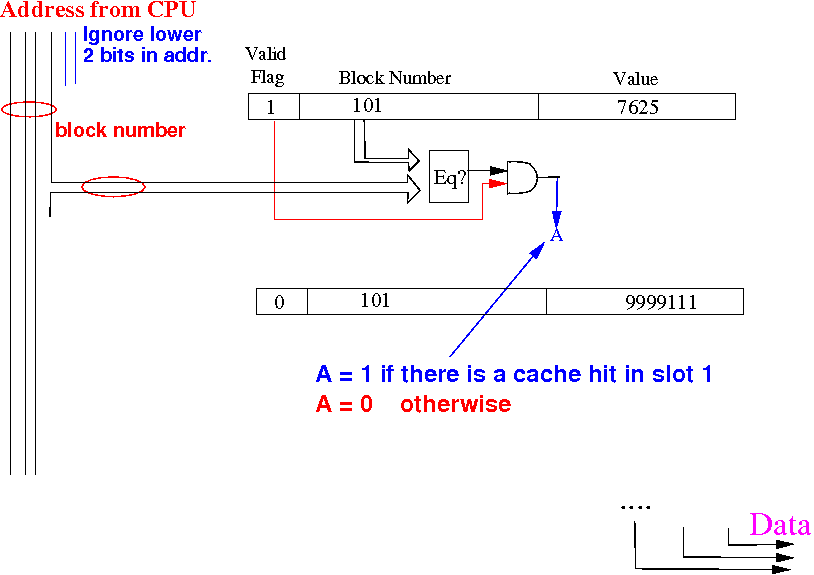
Let's take a look at how to return the data when we have a cache hit...
We use the cache hit signal to filter the value in the given cache slot:
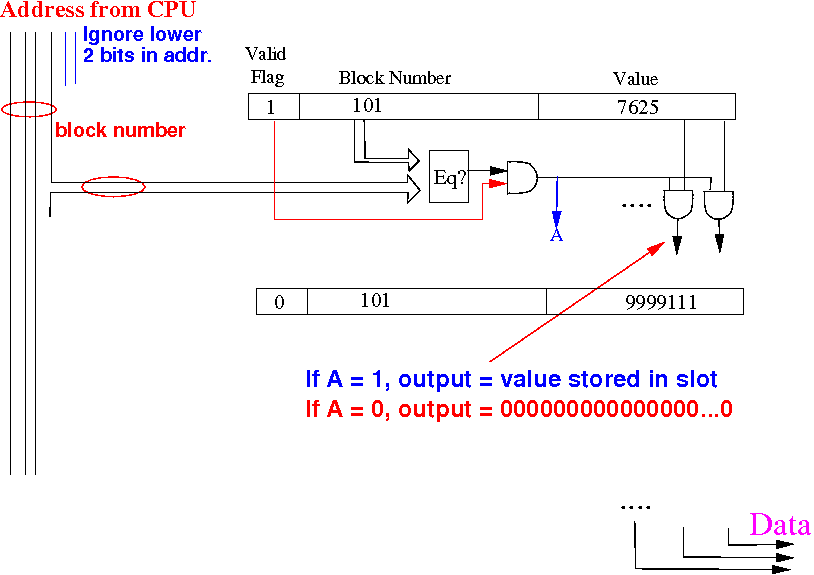
We will collect all these output later with OR gates !!!
REPEAT: We compare the requested block number with the block number stored in slot 2:

As before: the slot must be valid too to have a cache hit !!!
If block numbers are equal and valid=1, we have a cache hit:
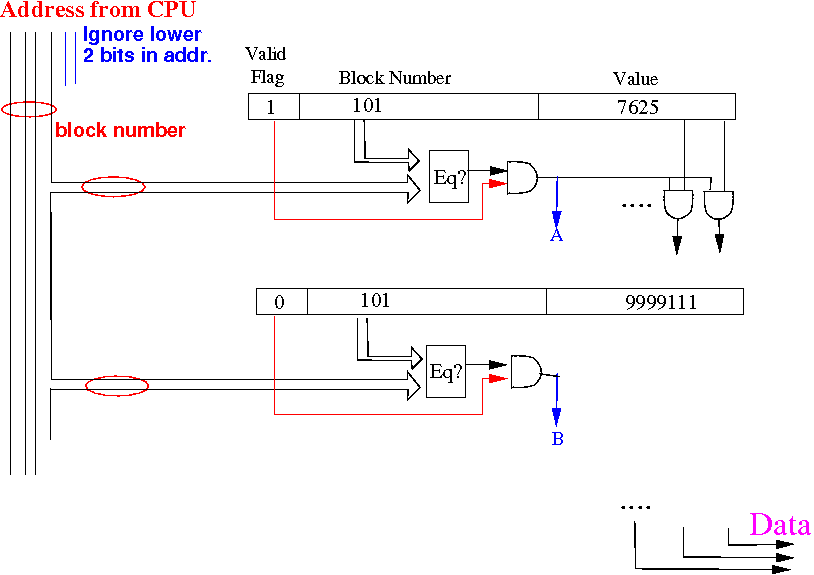
Now return the data when we have a cache hit...
We use the cache hit signal to filter the value in the given cache slot:

And so on... Let's look at how to detect whether there is a cache hit
If any one of the comparison outputs 1, there is a cache hit:
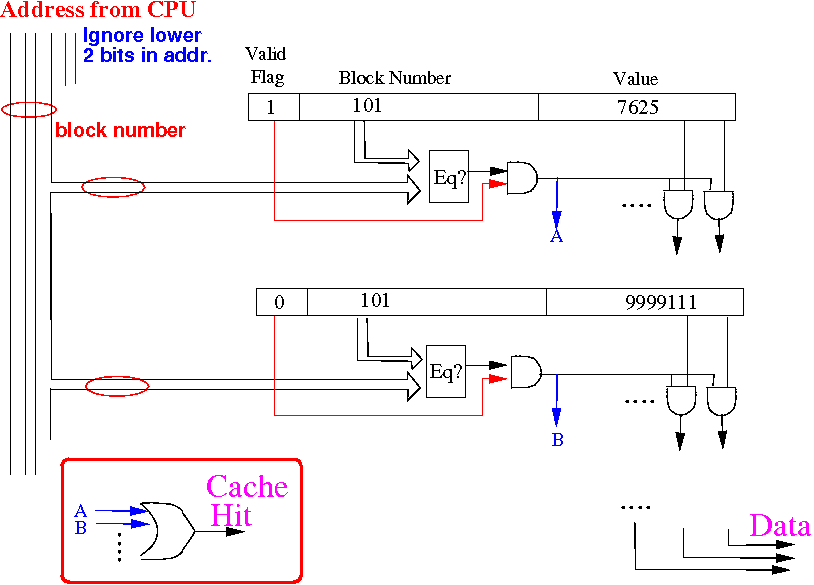
Let's look at how to return the data in a slot when there is a cache hit
We collect all the outputs with a number of OR gates:

This is the
(simplified) schema for
a associative cache memory
(I left out circuitry to
read the RAM when there is
a cache miss)
Function computed by the Equals? circuit:

The output = 1 if both input numbers are equal and output = 0 otherwise
Suppose we have a eq1? circuit that compute the equality of 2 bits:
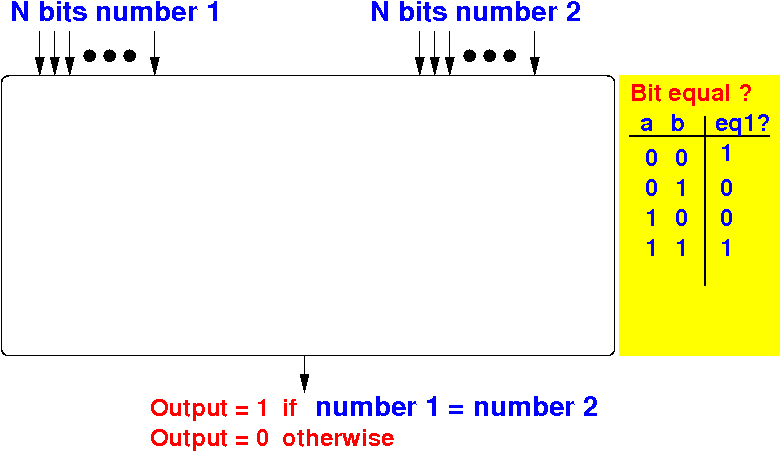
Question: what basic gate computes the eq1? boolean function ???
The Xnor (exclusive Nor) gate computes the eq1? (1 bit equals) function:
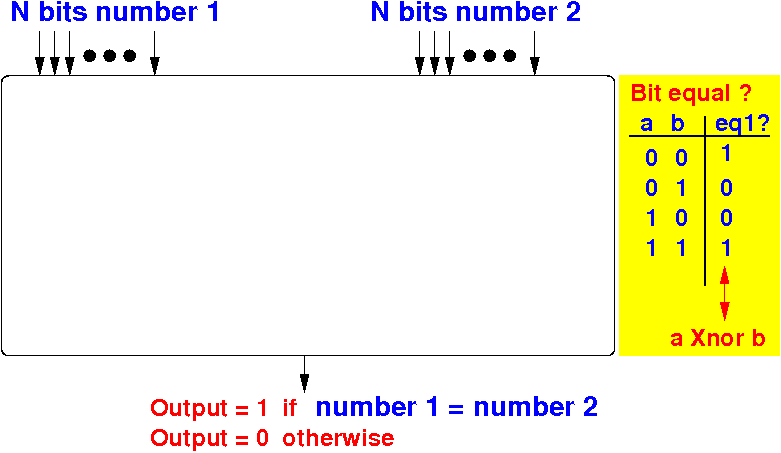
We will use the eq1? circuit to construct the equals? circuit.
The first bit of the (binary) numbers must be equal:
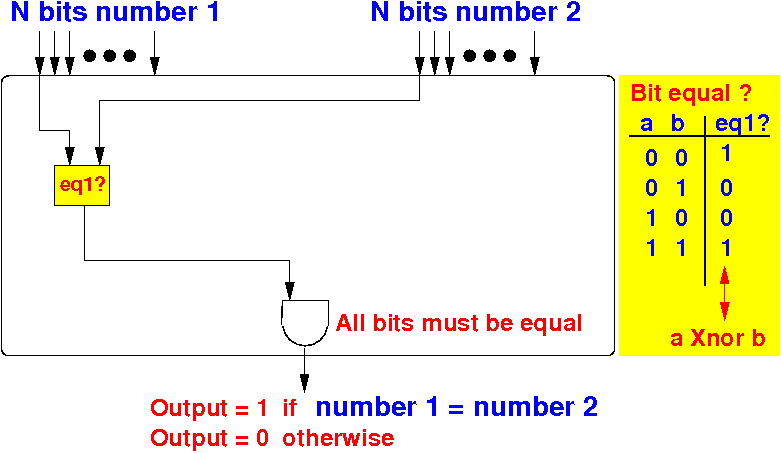
The second bit of the (binary) numbers must be equal:
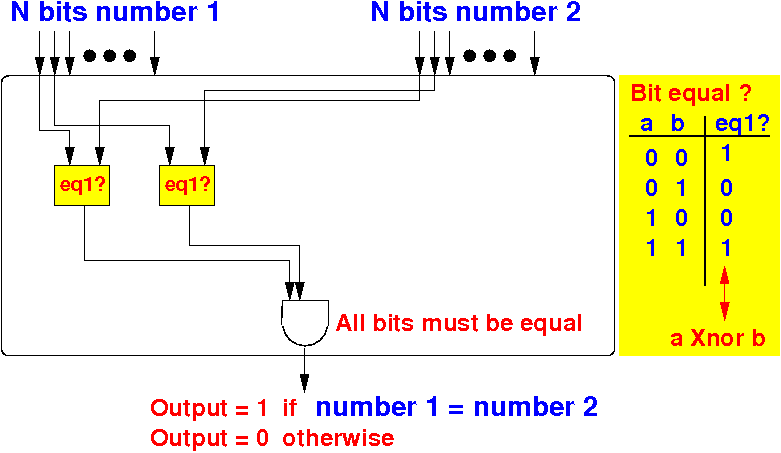
And so on: all bits of the (binary) numbers must be equal:
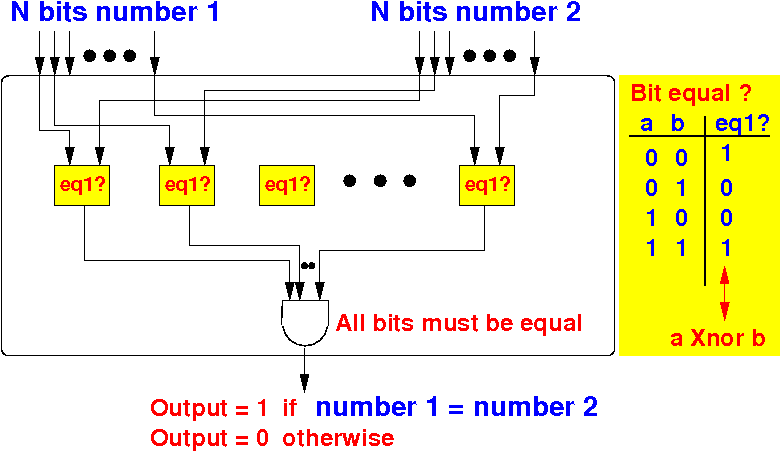
Comment: the eq1? circuit is actually an Xnor gate !
Strength: flexibility
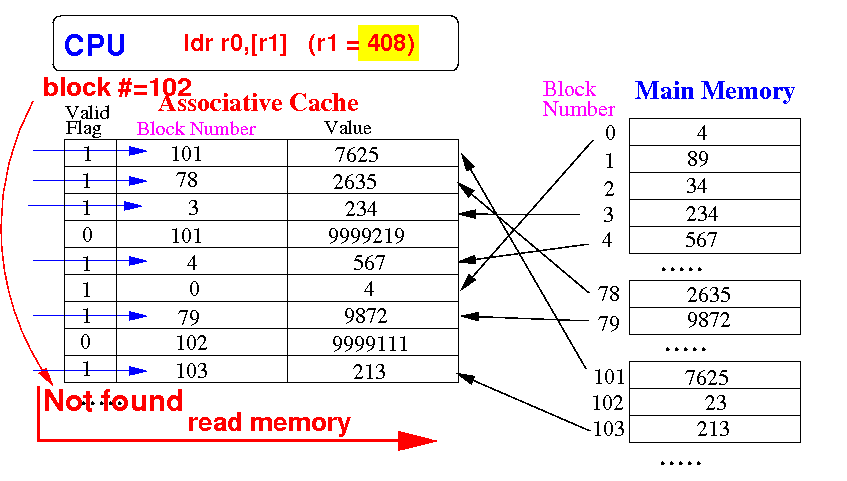
When a new (4 bytes) value is stored into a slot, the associative cache can use any slot
Strength: flexibility
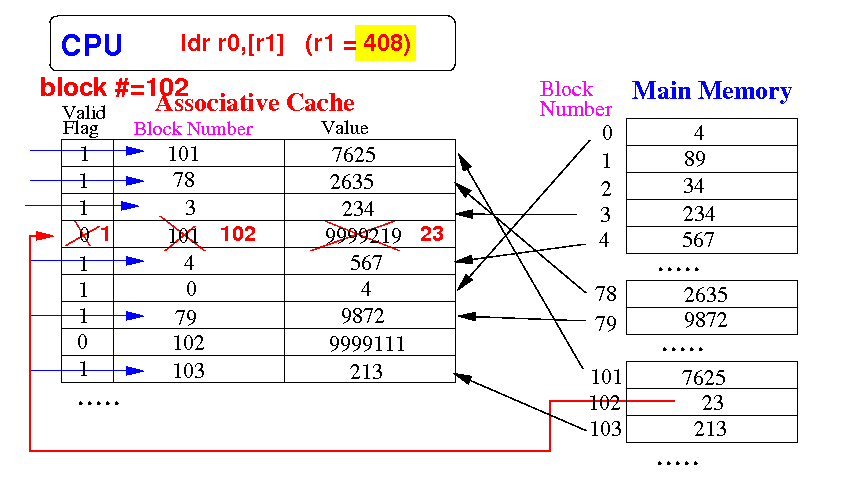
We can use the slot given in the above figure....
Strength: flexibility

Or another slot as given in the above figure....
Weakness: requires millions of compare circuits

That's a lot of hardware !!!